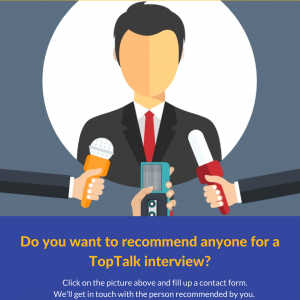 Micky, a passionate people leader, and strategic thinker having proven experience in strategy planning, practicing and directing various human capital management initiatives. With strong people management skills, he has been instrumental in building Employee Value Proposition and driving the organization’s vision. An innovative architect who believes in nurturing talent while keeping a focused structured approach to shaping and driving business goals. Being a technology enthusiast, he is passionate about leveraging technology to transform both talent and brand. He is a recipient of the various prestigious awards – Top 50 Most Influential HR Tech Leaders Award at Asia Pacific HRM Congress and Top 100 Most Influential HR Professional in ASIA Award by CHRO – World HRD Congress. He is listed in the World’s top 100 HR Influencer’s to follow on Twitter.
Micky, a passionate people leader, and strategic thinker having proven experience in strategy planning, practicing and directing various human capital management initiatives. With strong people management skills, he has been instrumental in building Employee Value Proposition and driving the organization’s vision. An innovative architect who believes in nurturing talent while keeping a focused structured approach to shaping and driving business goals. Being a technology enthusiast, he is passionate about leveraging technology to transform both talent and brand. He is a recipient of the various prestigious awards – Top 50 Most Influential HR Tech Leaders Award at Asia Pacific HRM Congress and Top 100 Most Influential HR Professional in ASIA Award by CHRO – World HRD Congress. He is listed in the World’s top 100 HR Influencer’s to follow on Twitter.
What does employee engagement mean to you?
Employee engagement is often mistaken for employee entertainment. I believe its intent depends on the organization’s culture and values; hence the real meaning varies with its context. I see it as an on-going process to develop an employee (skills/talent) to ‘go-beyond’ with a purpose to achieve organization’s growth.
It is a way, a process to connect people with an organization’s culture.
How to measure employee engagement?
Measuring employee engagement initiatives is meaningless if the “area(s) of concern” is not addressed timely. Thereby it is critical to delivering the context appropriately to employees. Time-to-time internal feedback surveys, tracking online company reputation feedbacks, hire an outside agency or consultant to access the floor sentiments may help in measuring the real sense and feel. However, I also see person-to-person (peers, reporting managers, skip managers) interactions and word-of-mouth a possible source to understand the happiness quotient.
What are the common causes of employee disengagement?
I have often heard about bad managers, poor processes, not being listened or heard, unproductive work, redundancy, idleness, poor leadership, un-supportive team, bad culture, unrealistic goals are few good reasons for disengagement. However, I see a lack of a platform to share disengagement and lack of intent in addressing disengagement as the most common cause of employee disengagement.
What are the drivers of employee engagement in today’s fast-moving world?
No engagement is successful if the intent and context are not clear to every stakeholder. Leadership is about action and not a position; hence it is critical for leaders to build a culture to harness talent. Leaders who can be trusted upon, processes that are realistic and meaningful create an engaged culture. In today’s fast-moving world use Technology with intent to engage people and not to replace them.
What makes a really effective employee engagement programme? Any best practices to share.
Employee engagement is actually much more than a program. It is an outcome of your organizations’ culture and values. Culture evolves with time and engagement with its context and intent. I don’t like treating people as resources as knowledge and experience are always appreciated with time. Create a culture towards toward harnessing and empowering talent, transparency and participation, open leadership, team building and people-centric.

1 thoughts on “Micky Chopra, Independent Consultant and Advisory”